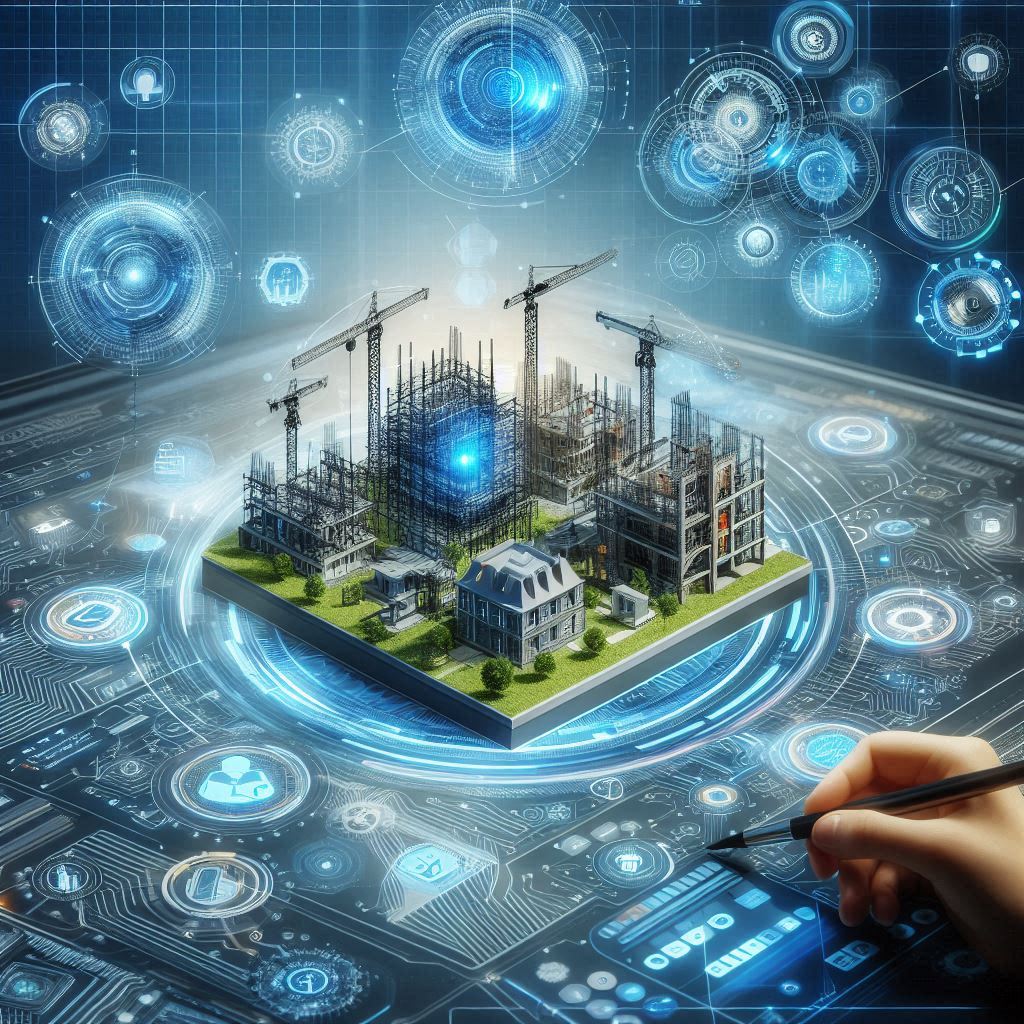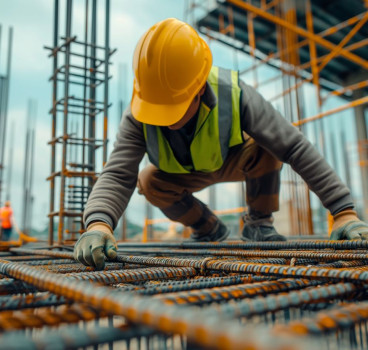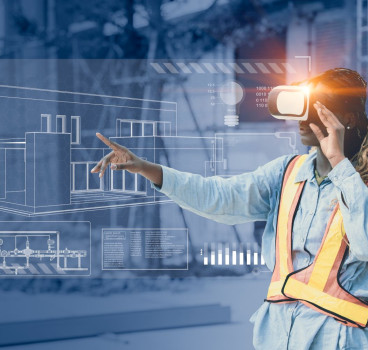How AI designs and builders can work together to adapt and innovate
For years, the conversation around AI in construction has largely centred on its efficiency – its ability to optimise schedules, predict material needs, automate repetitive tasks and enhance safety monitoring. These applications, while undeniably powerful, often position AI as a tool that streamlines existing processes, making the human job faster or safer. Yet, a more profound transformation is quietly taking place, one that shifts AI's role from merely assisting to actively participating in the very act of creation. It’s called AI-generated design and this emerging movement begs a critical question for those who bring such concepts to life – what happens when artificial intelligence creates the initial vision and how does the builder adapt, innovate and ultimately ensure the built reality aligns with both the technological design and the human experience, writes John Ridgeway?
It's a fascinating evolution where AI becomes a hyper-efficient creative partner, capable of processing unfathomable amounts of data, that would take human designers’ months or even years to compute. Imagine an AI analysing local climate data, material properties, energy consumption models, building codes and even neighbourhood aesthetics to generate not just one, but a hundred or a thousand preliminary designs, each optimised for specific criteria like sustainability, cost-efficiency, or occupant comfort. This is the realm of generative design, where AI doesn't just refine - it invents within defined parameters.
But what happens next? The output of a generative AI is not a ready-to-build blueprint. It's a highly optimised, data-driven creative framework, often in the form of complex digital models. This is where the contractor has to think differently. In this new situation, the builder becomes the crucial bridge between abstract algorithmic logic and tangible structural reality. This is where the cold precision of AI must be combined with the warmth of practical experience, site-specific wisdom and an acute understanding of human needs.
AI-generated designs, while mathematically perfect for their defined parameters, can sometimes be visually unconventional, structurally challenging, or even counter-intuitive from a construction standpoint. A builder must possess the keen eye and spatial intelligence to evaluate these designs, not just for compliance, but for feasibility, buildability and practicality on the ground.
Does the AI design make sense
Does the AI design truly make sense for the chosen construction method? Are there hidden complexities in its elegant curves or seemingly simple angles that would translate into immense cost or time overruns in the physical world? This requires moving beyond merely reading traditional drawings to truly "reading" a complex digital model, understanding its implications for sequencing, material handling and labour.
AI excels at creating ideas within defined constraints, but it often lacks the nuanced understanding of site-specific conditions, local material availability, or the subtle efficiencies gained from a skilled tradesperson's practical wisdom. A builder might identify that a complex, AI-generated façade detail, while aesthetically pleasing and thermally efficient on paper, would require specialised machinery or bespoke components that are prohibitively expensive or simply unavailable in their region.
Here, the builder needs to collaborates with the design team and the AI, suggesting alternative, equally effective, but more constructible solutions. This is where human creativity, grounded in years of hands-on experience, complements algorithmic innovation. It's about recognising that a slight alteration, perhaps to simplify a connection point or standardise a panel size, might sacrifice a fraction of theoretical efficiency, but yield significant gains in terms of cost, schedule and quality of execution.
While an AI can optimise for energy usage or structural integrity, it doesn't inherently understand the psychological impact of a space. It doesn't get how a specific material feels to the touch, how light plays across a surface at different times of day from a human perspective, or how acoustic reverberation might impact a neurodiverse occupant.
The builder, acting as an advocate for the end-user, brings this human-centric perspective to the refinement process. They might question aspects of the design that, while optimal for performance, could create uncomfortable transitions, visually jarring elements, or maintenance nightmares for future occupants. This critical human feedback loop ensures that the brilliance of AI is tempered and enriched by empathy and lived experience, transforming a data-driven concept into a truly habitable and enjoyable space.
Problem solving on site
Problem-solving on the construction site will also evolve. Instead of solely addressing unexpected physical challenges (e.g., encountering unforeseen ground conditions), builders will increasingly tackle "digital constructability" problems. This involves identifying discrepancies between the AI's optimised design and the realities of fabrication, assembly, or installation.
For instance, an AI might design a component with such precise tolerances that it becomes impossible to manufacture or install with standard equipment. The builder's innovation here lies in finding creative workarounds, collaborating with manufacturers to develop new tooling, or proposing slight adjustments to the design that preserve its intent. This requires a strong understanding of manufacturing processes, material limitations and the practical application of building physics.

The adoption of AI in design also places a renewed emphasis on digital literacy and advanced communication skills for builders. To interpret AI-generated models and collaborate effectively, builders will need a deeper proficiency in Building Information Modelling (BIM) software, parametric design tools and data visualisation platforms. They must be able to articulate their constructability concerns and propose solutions within a digital environment, engaging in a fluid, iterative dialogue with AI designers and human architects. This means moving beyond traditional 2D drawings to manipulating 3D models, understanding data layers and providing feedback that the AI can then process.
AI and ethics
Moreover, the ethical considerations of AI-generated design will increasingly fall within the builder's remit. While the ethical responsibility primarily rests with the project owner and designers, the builder, as the executor, will be on the front lines of interpreting and implementing designs that might have implicit biases or unintended social consequences. For example, an AI optimised project purely based on cost-efficiency might inadvertently suggest designs that rely on unsustainable labour practices or materials with negative environmental impacts not explicitly coded into its parameters. The human builder's critical judgment and adherence to ethical building practices then become a vital safeguard against such outcomes, ensuring that the drive for efficiency does not override social responsibility or environmental stewardship.
In this evolving landscape, the builder’s role as an innovator becomes more profound. No longer solely innovating on-site construction techniques, they will be challenged to innovate how they build AI-generated designs. This could involve developing new fabrication methodologies, pioneering automated assembly processes, or even creating new types of building components specifically tailored to the unique geometries or material combinations suggested by AI.
The builder might become a co-developer of new construction technologies, pushing the boundaries of what is possible in the built environment. This fosters a culture of continuous learning and adaptation, where every project becomes an opportunity to refine the human-AI partnership.
Ultimately, the human-AI collaboration in design is not about human redundancy, but about human elevation. It frees architects and engineers from countless hours of iterative manual work and computational heavy lifting, allowing them to focus on higher-level creativity, deeper engagement with client visions and the nuanced human experience of space.
For builders, it transforms their role from skilled executors to critical interpreters, pragmatic innovators, ethical stewards and essential collaborators in the very act of creation. They become the indispensable guardians of constructability, the champions of human comfort and safety and the crucial bridge that translates intelligent algorithms into tangible, beautiful, and profoundly functional spaces.
The future of construction is not just about AI designing - it's about humans and AI designing together, each bringing their unique and irreplaceable strengths to create a built world that is not only more intelligent and efficient, but also more sustainable, more equitable and more profoundly human than anything we could have achieved alone.
Additional Blogs

What the UK can learn from global construction tech leaders
The UK construction sector stands at a critical crossroads. Mounting pressures - stagnant productivity, acute labour shortages, tightening safety requirements, ambitious carbon-reduction targets and...
Read moreAre architects losing their influence in the digital era?
For decades, architects have been the central creative force in construction, shaping the buildings we see and the way projects are conceived, communicated and delivered. Their role has been...
Read more

Why the word “Innovation” has lost its meaning in construction
“Innovation” has become one of the most overused terms in construction. It appears in the dozens of press releases we receive each day, conference talks and project reports, often without any real...
Read more